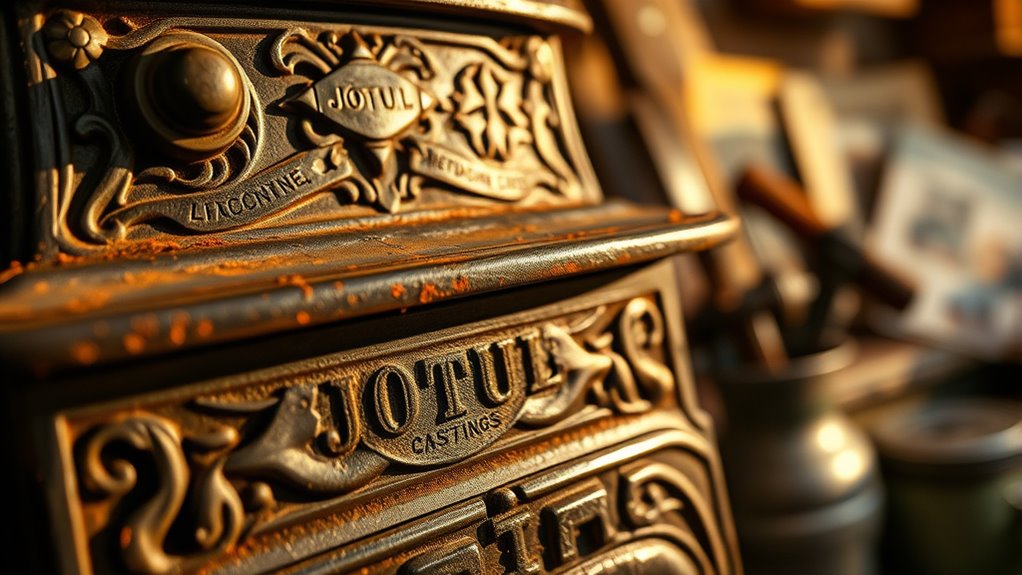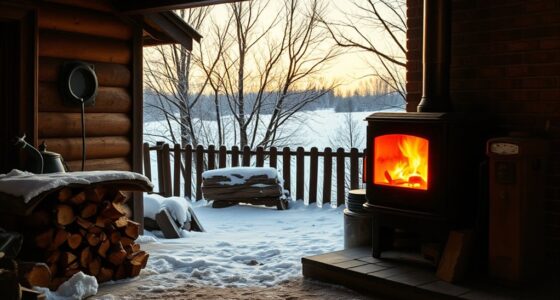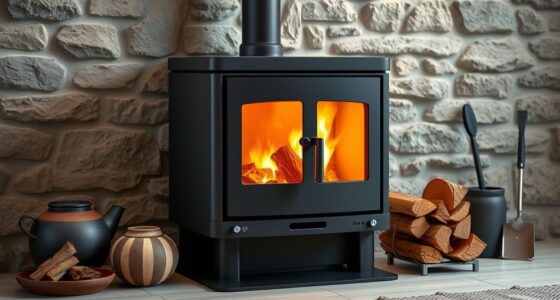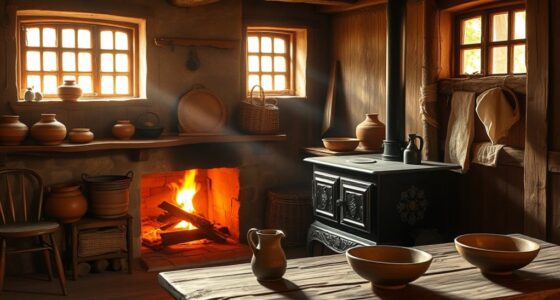Famous wood stove manufacturers like the Weir Stove Company and Stamford Foundry emerged in the 1800s, driven by innovation and industry growth. Benjamin Franklin laid early groundwork with his inventiveness, while Connecticut became a key hub for stove manufacturing. These companies introduced improvements in safety, efficiency, and design, shaping modern stoves. Today, manufacturers are focused on eco-friendly standards and sustainability. Continue exploring to uncover the full stories behind these pioneering brands.
Key Takeaways
- Weir Stove Company, founded in 1879, became a leading American manufacturer producing around 80,000 stoves annually by the early 20th century.
- Connecticut’s early stove industry, starting with the Lafayette blast furnace in 1799, played a pivotal role in shaping U.S. stove manufacturing.
- Benjamin Franklin’s 1744 invention of the Franklin Stove set foundational innovations in safety, controllability, and efficiency for wood heating.
- Stamford Foundry, established in 1830, transitioned from tool-making to producing stoves, contributing significantly to regional industry growth.
- Modern manufacturers focus on EPA-compliant, low-emission stoves, building on historical innovations to promote sustainable heating solutions.
The Pioneers of Early Wood Stove Design
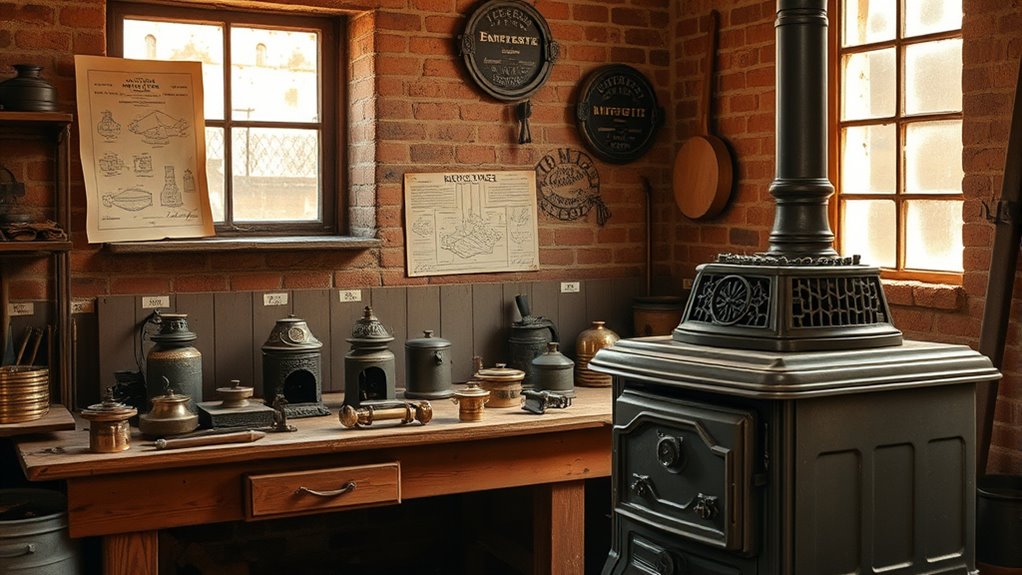
The pioneers of early wood stove design laid the foundation for modern heating technology through innovation and practical craftsmanship. Benjamin Franklin’s invention of the Franklin Stove in 1744 was a breakthrough, improving heat output and safety. Early manufacturers focused on innovations that enhanced controllability and efficiency. Cast iron stoves became popular for their durability and heat retention, setting the stage for future designs. The Weir Stove Company, founded in 1879, played a key role in this evolution, producing about 80,000 units annually by the early 20th century. Their emphasis on practical manufacturing and aggressive advertising helped shape the industry. These pioneers’ efforts in improving heat output and safety established essential standards, which influenced modern stove designs and impacted the development of modern wood and coal stove designs. Additionally, advancements in data analytics helped manufacturers optimize production and understand user needs more effectively.
Connecticut’s Role in Stove Manufacturing Development
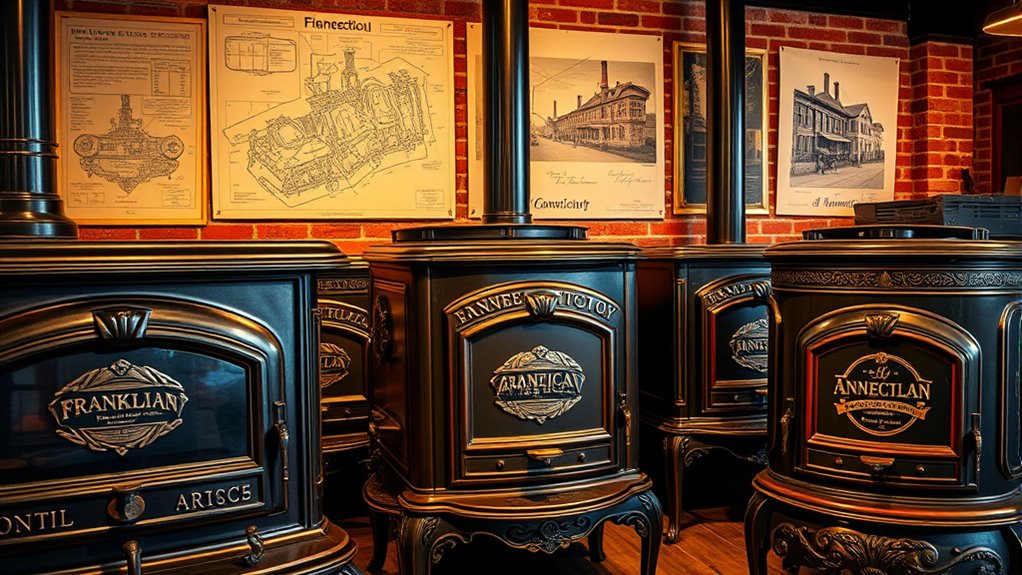
Connecticut quickly established itself as a key player in stove manufacturing starting in 1799, when the Lafayette blast furnace in Hydeville began producing cast iron heating stoves. By the early 19th century, the state’s stove manufacturing industry expanded, selling models across New England and solidifying its regional prominence. The Stamford Foundry, founded in 1830 and shifting from agricultural tools to stoves, played a crucial role in this growth by producing stoves, fences, and grills. As iron supplies dwindled and the Lafayette furnace ceased stove production around 1840, Connecticut’s focus moved to other manufacturers. Nonetheless, Connecticut’s early leadership in cast iron heating stoves helped shape the regional stove industry, making the state a significant hub in America’s stove manufacturing development. Diversification strategy also contributed to the industry’s resilience as manufacturers adapted to changing materials and market demands, showcasing the importance of industry adaptation in sustaining growth.
Innovations by Benjamin Franklin and 19th-Century Advances
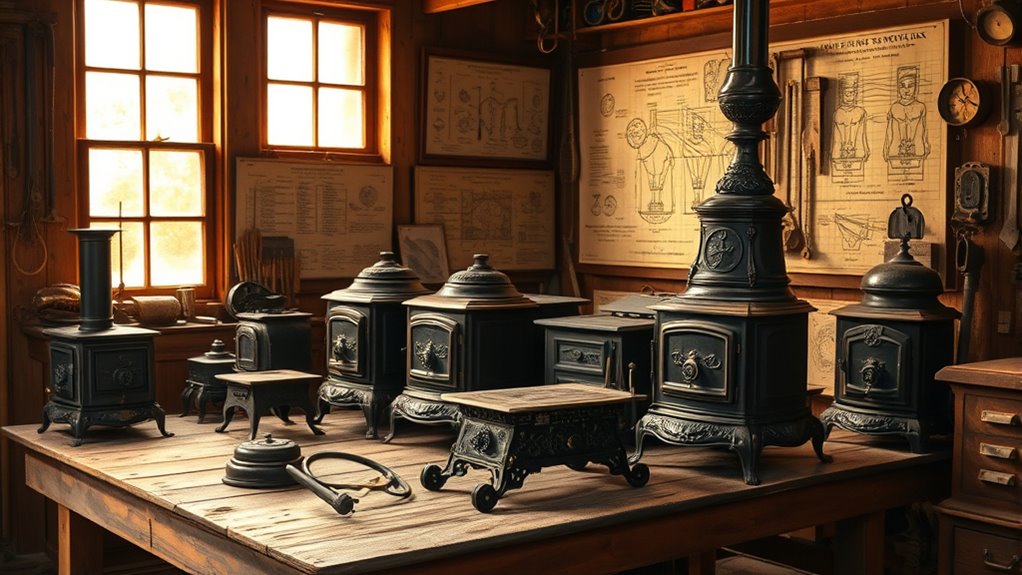
Benjamin Franklin revolutionized stove design in 1742 with his invention of the Franklin Stove, which featured cast iron construction, improved ventilation, and a convection chamber to boost heat efficiency. This innovation allowed heat to radiate even after the fire was out, marking a significant leap forward. In the 19th century, further advancements enhanced efficiency through controllable airflow, baffle systems, and better venting. Early innovations, like cast iron stoves in China around 220 A.D. and Strasbourg’s 1557 wood-conserving models, laid the groundwork. The emergence of mass-produced cast-iron stoves, such as America’s “Five Plates,” set the stage for modern heating. These developments, summarized below, reflect the ongoing quest for efficient, reliable stove technology.
Additionally, the development of headphones and other audio equipment paralleled innovations in household appliances, emphasizing improved design and user experience.
The Rise of American Stove Makers in the 1800s
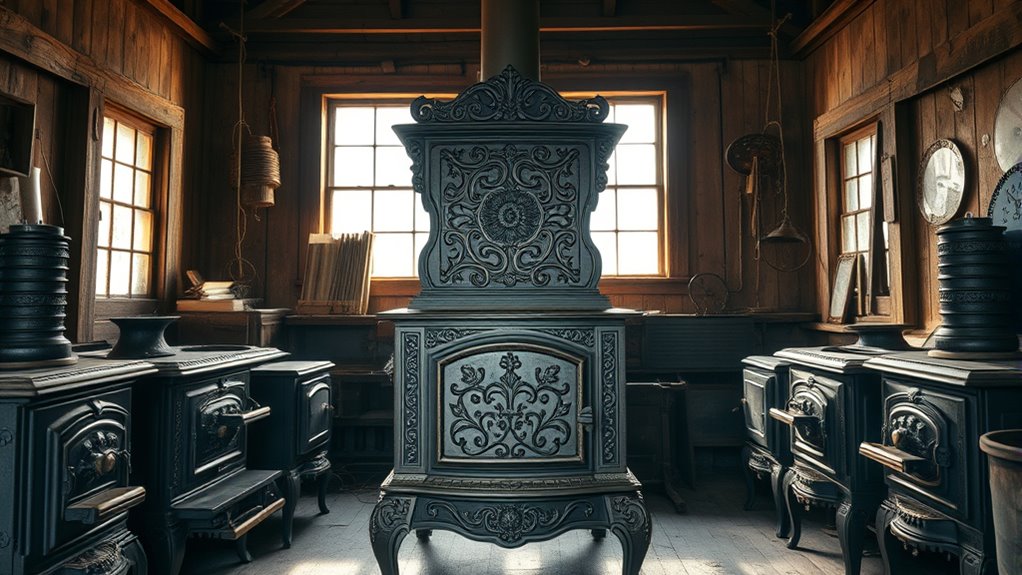
As the 1800s unfolded, American stove manufacturers experienced rapid growth fueled by industrialization and innovation. The stove industry expanded as companies like Stamford Foundry in Connecticut began producing thousands of stoves annually, including wood stoves essential for heating homes. By the late 19th century, firms such as Weir Stove Company in Massachusetts became dominant, making around 80,000 stoves each year. To reach customers across New England and beyond, these manufacturers relied heavily on traveling salesmen and catalogs. Technological advances, starting from Benjamin Franklin’s cast-iron Franklin Stove, transformed simple heating devices into efficient, marketable appliances. The fierce competition and rapid industrialization of the 19th century propelled American stove makers to the forefront, shaping the growth of the stove industry nationwide. Sound vibrations are believed to enhance cellular regeneration and overall health. Additionally, the development of mass production techniques allowed these companies to meet the growing demand efficiently and at lower costs.
Modern Evolution: From EPA Standards to Sustainable Heating
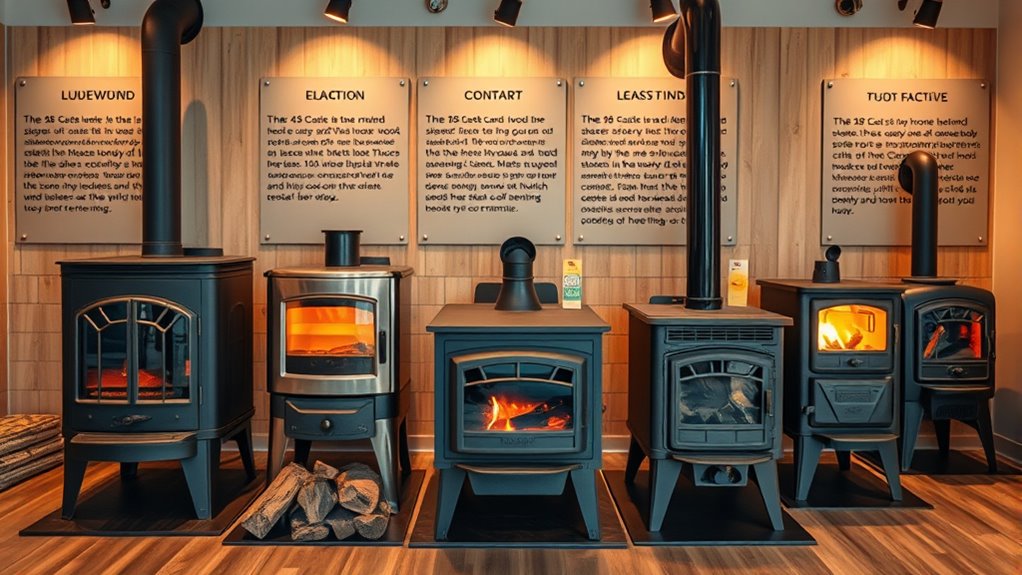
The evolution of wood stove technology has been driven by increasing environmental awareness and stricter government standards. EPA standards, starting in 1983, pushed manufacturers to develop low-emission stoves, leading to catalytic models and hybrid stoves that emit as little as 1-2 grams per hour. The 2014-2017 regulations further tightened emission standards to 2 grams per hour by 2020, encouraging innovation in cleaner, more efficient designs. Today, these advancements support sustainable heating, reducing particulate pollution and climate impact. Innovative engineering has played a crucial role in meeting these evolving standards and improving stove performance. Governments and organizations worldwide now promote incentives and certification programs to encourage environmentally friendly wood and pellet heating systems. This shift reflects a broader commitment to protective styling benefits sustainable heating solutions, combining technology, regulation, and environmental responsibility for healthier indoor air quality and a greener future. Additionally, advancements in air quality management have allowed for the refinement of stove designs to better meet specific regional needs and standards. Furthermore, ongoing research into emission reduction techniques continues to drive improvements in stove efficiency and eco-friendliness, ensuring that future models can meet even stricter environmental criteria.
Frequently Asked Questions
Who Makes the Highest Quality Wood Stove?
You want the highest quality wood stove, and many factors matter, like durability, efficiency, and design. Brands like Vermont Castings, Jotul, and Morso stand out for their craftsmanship, long-lasting materials, and innovative features. You should consider your needs, such as style or eco-friendliness, and compare these brands to find the perfect fit. Ultimately, the highest quality stove combines reliability, performance, and your personal preferences.
What Is the Oldest Wood Stove Company?
You might find it fascinating that the oldest known wood stove company dates back to 1830, rooted in history and tradition. Stamford Foundry in Connecticut holds that honor, quietly shaping the way homes stay warm for generations. Their legacy reminds you of a time when craftsmanship and innovation came together, offering enduring warmth and comfort. It’s a story of enduring quality that continues to warm hearts even today.
What Is the 3:2-10 Rule for Wood Stoves?
The 3:2-10 rule guides you on safe clearance distances around your wood stove. You should keep at least 3 inches from combustible materials on the sides, 2 inches in the back, and a minimum of 10 inches in front. Following this rule helps prevent fire hazards, improves airflow, and guarantees your stove runs efficiently. Always check local codes and manufacturer instructions for specific clearance requirements.
Why Was the Franklin Stove Not Successful?
You might think innovation guarantees success, but the Franklin Stove proves otherwise. Despite its clever design, you’d find it too costly and complicated to install, making it impractical for everyday homes. Its smoke and pollution issues, along with limited heating capacity, meant people avoided it. Ironically, what was meant to improve warmth ended up limiting its adoption, showing that progress doesn’t always lead to widespread acceptance.
Conclusion
You might think these stories are just about old stoves, but they show how innovation and persistence shaped today’s heating options. Even if you doubt the importance of historical advancements, remember that modern eco-friendly stoves owe a lot to these pioneers. Their legacy proves that progress isn’t just about technology, but about improving lives—so next time you turn on your heater, give a nod to the innovators who made it possible.

